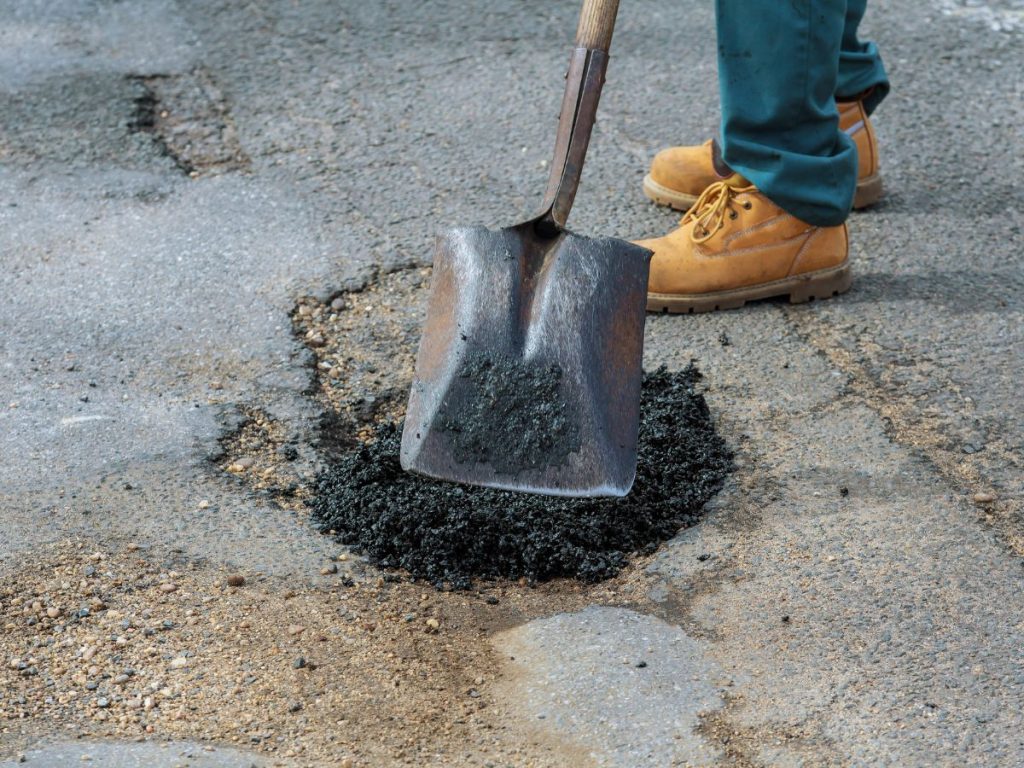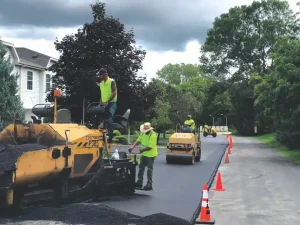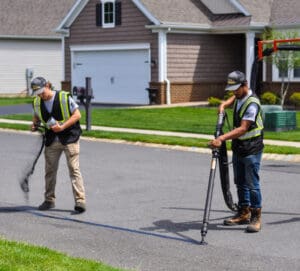Asphalt is sturdy and durable, making it a popular paving solution for personal, residential, and commercial use. However, despite its durability, the condition of asphalt pavement deteriorates under continued stress and other factors over time.
Cracks and potholes can develop at any time and spread quickly. So, it’s essential to conduct timely repairs to maintain the shape of your asphalt and avoid costly repair expenses in the long run. But repairs must be done right to achieve this goal.
So, if you’re new to asphalt patching, read along to discover the correct patching tips for parking lots, driveways, tennis courts, playgrounds, and more.
Table of Contents
When Should You Patch Asphalt?
A vast majority of people overlook the importance of “when” and jump straight to “how” of asphalt patching. Should you seal cracks as soon as you discover them or wait until they develop into potholes? Well, catching and sealing cracks early before they turn into potholes is crucial but it doesn’t always work that way.
It’s advisable to consider patching once it turns into a pothole and before it turns into an even larger pothole or a crater. Patching too early may not get the job done. Also, waiting until cracks develop into massive potholes will only deteriorate the condition of your asphalt and make it costlier to repair later.
So, the issue here is timing to ensure asphalt patching is effective. It must be done just when the cracks start turning into potholes.
How to Patch Asphalt: 4 Effective Methods
The “how” to patch is where the real work is and where it matters to maintain the condition of your asphalt. There are several options for asphalt patching methods to choose from. Your choice will depend on many factors such as weather, budget, time, purpose, and expected life of the patch. The choice will also depend on the normal usage of your asphalt. Is it always too busy? Is it rural or urban? Does the use involve frequent and heavy trucks? Etc.
1. Throw-and-Go
This is the simplest and the fastest DIY patching method for you. It doesn’t require any prior preparations, major equipment, or professionals. All you need to do is put asphalt into the pothole, pack it, and let the traffic that drives over it flatten it out over time.
2. Throw-and-Roll
This is another temporary patching solution similar to throw and go method. It doesn’t require preparation of the pothole before patching and it’s super quick and easy. It essentially involves throwing liquid asphalt and rolling it down. However, throw and roll may require the use of equipment to flatten the asphalt.
3. Semi-Permanent Repair
This is usually a go-to option for many due to its lasting benefits and costs involved. In this method, you’ll first clean and cut away the eroding materials of the damaged asphalt. Then, you’ll fill the hole with asphalt compacted tightly with the proper equipment and level it out.
4. Full-Depth Replacement
If any of the methods above don’t work for you or you’re after a more permanent fix, full-depth replacement is a great option. It requires the removal of the entire layer of the affected asphalt and sometimes the removal of subgrade depending on the damage. It’s quite a complex, costlier, and less practical asphalt patching method.
Asphalt Repair & Pothole Patching Services in Virginia & D.C.
Connect with Pro-Pave for Your Asphalt Patching Needs
The asphalt patching pointers above can go a long way in ensuring your asphalt is in great condition. However, remember the secret to quality patching is getting it right. This involves knowing when, how, and the right patching method.
In case you still aren’t sure about asphalt patching, we’d advise working with a professional. At Pro-Pave, Inc., we are a reputable asphalt paving company with several decades of experience serving clients of all kinds.
Please contact us or call (703) 433-9500 for all your asphalt needs.




